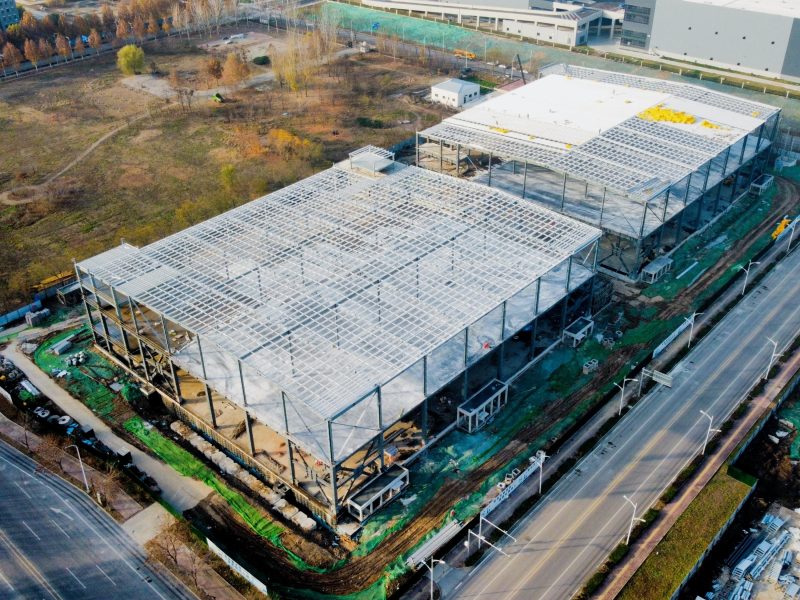
Prefab Container Homes: Cost-Effective and Rapid Housing Solutions for Commercial Projects
With the increasing demand for affordable, fast, and flexible housing, traditional construction methods often fall short in terms of speed, cost, and adaptability. Prefabricated container homes provide a modern solution, combining modular design, rapid deployment, and durable materials.
This article explores the advantages, design considerations, and applications of prefab container homes for commercial clients and B2B housing projects.
What Are Prefab Container Homes?
Prefab container homes are constructed from repurposed or newly fabricated shipping containers. These containers are transformed into fully functional living or working spaces using modular techniques. Factory-built units ensure consistent quality, and on-site assembly allows fast deployment.
Unlike conventional housing, container homes are highly flexible. They can be stacked, combined, or configured to suit various needs, from temporary accommodations to permanent commercial housing projects.
Key Advantages of Prefab Container Homes
- Rapid Deployment
Prefabrication allows units to be delivered and installed quickly, reducing construction timelines from months to weeks. - Cost Efficiency
Lower labor costs, minimal material waste, and reduced construction time make container homes a budget-friendly solution for commercial clients. - Durability and Strength
Steel containers withstand extreme weather, pests, and fire, providing long-lasting housing solutions. - Flexibility and Scalability
Container homes can be stacked vertically or arranged horizontally, allowing scalable solutions for temporary or permanent projects. - Customizable Design
Interiors can be modified for offices, living spaces, kitchens, bathrooms, and storage. Exteriors can also be customized with cladding, windows, and insulation. - Sustainability
Repurposing containers reduces construction waste and supports eco-friendly practices. Insulated panels and energy-efficient designs further enhance sustainability. - Mobility
Prefab container homes can be relocated, making them ideal for temporary housing, construction camps, or disaster relief projects.
Design Considerations for Commercial Projects
B2B clients should consider:
- Space Utilization: Optimize layout for living, office, or mixed-use spaces.
- Insulation and Climate Control: Ensure comfortable temperatures and energy efficiency.
- Structural Integrity: Reinforce containers if stacking or modifying walls.
- Utilities Integration: Plan plumbing, electrical, and IT systems efficiently.
- Expansion and Reconfiguration: Modular design allows future adjustments without major construction.
Applications Across Industries
Prefab container homes are suitable for:
- Construction Site Housing: Temporary living quarters for workers.
- Disaster Relief Projects: Rapid deployment of shelters for affected communities.
- Corporate Accommodation: Employee housing near industrial sites or remote locations.
- Tourism and Hospitality: Pop-up hotels, hostels, or resorts using container units.
- Affordable Housing Projects: Cost-effective, scalable solutions for urban or rural developments.
Case Studies
- Construction Camp (Australia):
Deployed 50 container homes as temporary housing for site workers. Reduced setup time by 70% compared to traditional housing. - Disaster Relief Shelter (USA):
Provided container homes for flood-affected communities. Units were delivered and installed within two weeks, offering safe and durable accommodation. - Corporate Housing (Europe):
Built prefab container homes near an industrial site for employees. Modular design allowed easy expansion as workforce increased.
Why B2B Clients Should Consider Prefab Container Homes
Prefab container homes provide several advantages for commercial projects:
- Speed: Quick assembly enables rapid operational readiness.
- Cost Savings: Lower construction, labor, and material costs.
- Durability: Steel construction ensures long-term use and safety.
- Flexibility: Modular design allows easy expansion or relocation.
- Sustainability: Recyclable materials and energy-efficient design support eco-friendly operations.
- Operational Efficiency: Optimized layouts improve comfort and functionality for occupants.
For commercial and B2B clients, prefab container homes offer a practical, scalable, and cost-effective housing solution.
Conclusion
Prefab container homes are revolutionizing commercial and temporary housing by offering fast, durable, and flexible solutions. Modular design, prefabrication, and energy-efficient features allow businesses to deploy housing quickly while reducing costs and maintaining sustainability.
For B2B clients seeking adaptable and reliable housing solutions, prefab container homes provide a strategic, practical, and long-term option.
